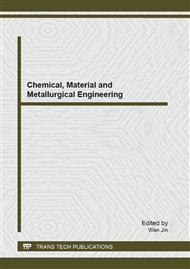p.3
p.9
p.14
p.23
p.28
p.31
p.35
p.40
High Performance of the CFBC Pilot Plant with CO2 Chemical Absorption by Optimizing the Absorber Parameters
Abstract:
The objective of this paper consists to identify the influence of absorption process temperature and pressure on the energy requirement of the CO2 chemical capture process. The study aimed to reducing CO2 emissions from coal combustion process in the circulating fluidized bed combustion (CFBC). The post-combustion CO2 capture process was analyzed using primary amine MEA in the following conditions: the ratio L/G was varied between 0.45..1.6 kgliquid/kggas keeping constant the flue gas flow and varying the solvent flow between 500 .. 1 600 kg/h. The CO2 capture process efficiency was maintained constant around 90%. For a concentration of 30% MEA in solution, it was observed that when the absorber solution temperature increasing from 32 to 49 °C, the amount of heat required for the solvent regeneration increased from 2.1 to 3.3 GJ/tCO2 according to the solvent pressure and flue gas pressure respectively. On the other hand, for varying the absorber solvent pressure in the range 1.1 .. 2.1 atm, the heat required by the process was not significantly influenced. Considering the same variation of the absorber solvent temperature, the rich loading solvent was increased from 0.43 to 0.57 mol CO2/mol MEA and consequently the MEA capacity of CO2 absorption from 0.3 to 0.422 molCO2/mol MEA.
Info:
Periodical:
Pages:
3-8
Citation:
Online since:
August 2013
Authors:
Keywords:
Price:
Сopyright:
© 2013 Trans Tech Publications Ltd. All Rights Reserved
Share:
Citation:


